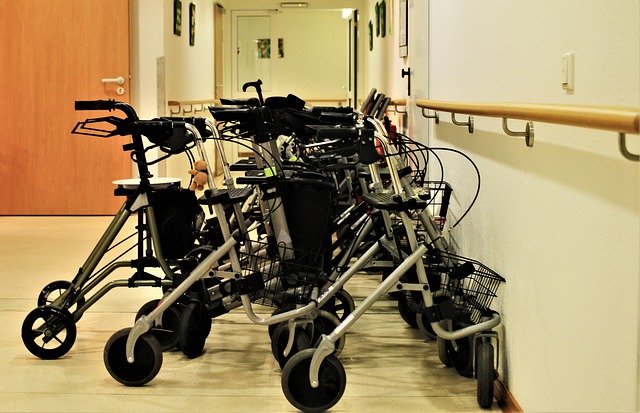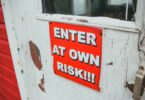Katie Engelhart reports for California Sunday on what happened at Life Care Center of Kirkland, the first COVID-19 hot spot in America and, more generally, the role of the nursing home industry in spreading the novel coronavirus. Was Life Care Centers of America, a large nursing home chain, to blame for the many deaths in this facility?
In a matter of a few weeks, 74 of the 121 residents at the Life Care Center of Kirkland nursing home–more than 60 percent of the residents–were no longer living there. Twenty-six had died. Another 26 had COVID-19. And, 66 staff members showed symptoms, but more than eight in ten of them had not been tested. The county could not provide the necessary testing. Over time, 81 residents tested positive for COVID-19, along with 50 staff and visitors, and 46 people died.
By mid-February, staff at the Life Care facility were aware of the growing number of people with respiratory infections. They thought it was the flu. But, they did not report the outbreak immediately as required by law. County health officials should have been notified within 24 hours; instead staff at Life Care waited 15 days.
Staff did not even discuss the respiratory outbreak when they first noticed it at their quality assurance meeting. The medical director was not at the meeting. Rather, staff went ahead and held a Mardi Gras party. It was 17 days before the facility went into lockdown.
During the second half of February, Life Care Center of Kirkland did not have the personal protective equipment it needed to protect staff and residents and control the spread of the virus. It was losing staff. It had an emergency response protocol required by law, but the protocol applied to hurricanes, not to pandemics and other medical emergencies. And, Washington state health officials would not allow Life Care to bring in staff from out of state without first going through a lengthy application process.
Life Care appealed to nurses in its Washington State facilities to help out. It asked the county health department for COVID-19 tests, but it said it had no tests. Life Care’s medical director, the only doctor on staff, had come down with COVID-19 symptoms and was in quarantine. Life Care had no back up plan for another doctor. Since he was the doctor for 90 percent of the residents, they were without a physician to care for them.
A week after the facility was in lockdown, the state provided just 40 COVID tests for the 90 residents. There were none available for staff. Through the US Department of Health and Human Services, a federal “strike team” of military doctors and nurses arrived eight days after lockdown. They had no long-term care experience and no experience caring for older adults. They also were not interested in learning from staff about what they were seeing in terms of how the virus was spreading.
The daughter of one resident who died filed a wrongful-death suit against Life Care. By that time Life Care had been fined $611,325 dollars based on evidence of “serious deficiencies” in its response to the pandemic. Federal regulators said that Life Care had placed residents in “immediate jeopardy.” Under pressure from the nursing home industry, many states have given nursing homes immunity protection from lawsuits. Washington has not yet decided whether it will.
Life Care, the largest private long-term care corporation in the country, is steadfastly unapologetic for the tragedies at Kirkland. It believes it has no responsibility for the death of so many of its residents and staff. (Note that Life Care Center of Kirkland had a five-star rating from Medicare. But Medicare’s star-rating system for nursing homes is a farce. A lot of the data factored into the ratings is self-reported. It should not be trusted.)
County health officials also take no responsibility. They appear to believe that the county had no responsibility for helping a private nursing home. For its part, the CDC came to the facility simply to assess the situation and provide technical guidance. It said its role was not to provide assistance. The state’s disaster response team did not step in until five days after lockdown.
The nursing home industry is now a $100 billion business. About seven in ten are for-profit. They have not managed the pandemic well. Nearly 46,000 residents have died, representing more than one in four COVID-deaths. And, 177,129 nursing-home residents have tested positive for COVID-19. They have actively fought regulatory protections locally and in Washington DC.
There is a history of serious issues with the for-profit nursing homes, including fraud, understaffing and poor infection control. Life Care, along with the other four largest nursing-home chains have been charged with major wrongdoing in the past. In 2016, Life Care settled charges of Medicare fraud–billing for rehab services patients should not have been getting, among other things. The other largest nursing-home chains have also been charged with Medicare fraud. Two settled false claims charges. Those that settled paid tens of millions of dollars.
Meanwhile, the Trump Administration, relaxed infection-prevention measures and other regulations on nursing homes in 2019, saying they were “unnecessary, obsolete, or excessively burdensome.”
Here’s more from Just Care:
- Coronavirus: Strike teams step in to help nursing home residents and staff
- It’s time to rethink nursing home care
- Medicare will identify 400 nursing homes with serious health and safety violations
- Don’t be misled by “five-star” nursing home ratings
- Medicare coverage of nursing home care is very limited










